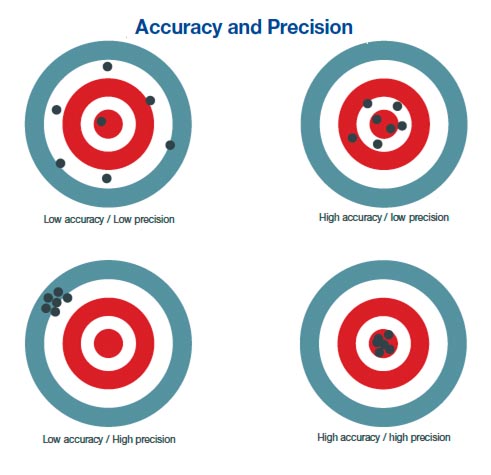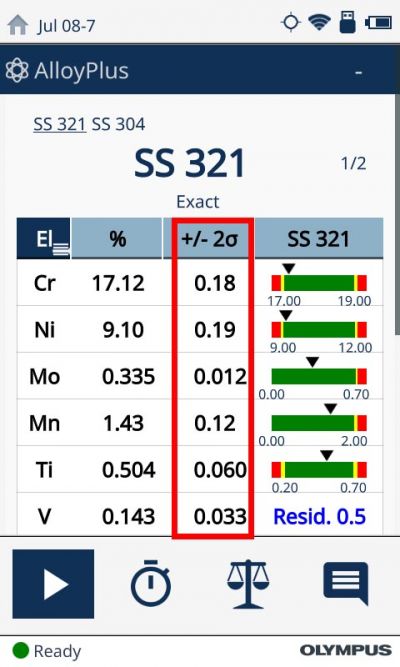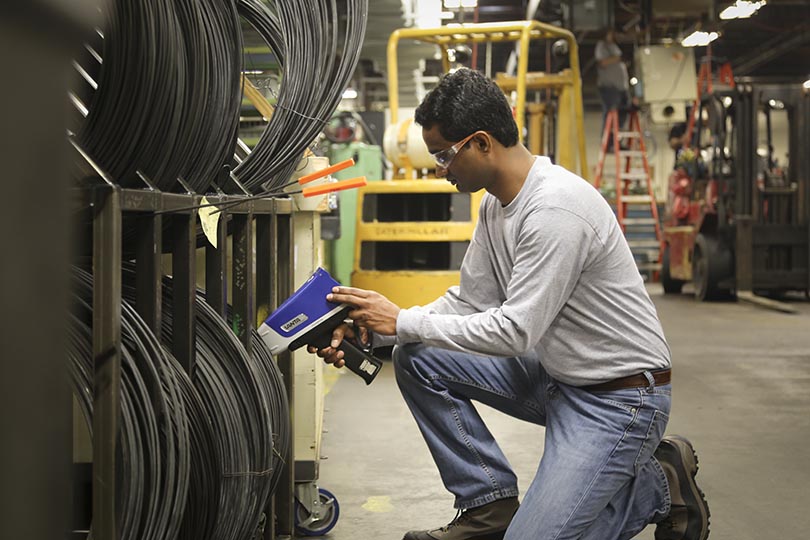When evaluating analytical results with handheld X-ray fluorescence (XRF), it’s important to understand the difference between accuracy and precision.
Precision is a measure of repeatability, or how much one test result is like another. Accuracy, on the other hand, is whether that result hits the target. Of course, for any analytical technique, you want both good precision and good accuracy.
Keep reading to learn more about accuracy and precision in handheld XRF analyzers.

Understanding Precision
Vanta™ handheld XRF analyzers report the precision (known mathematically as sigma) in the +/- column on the display. Precision is mostly a function of the number of X-ray counts. You can test longer to get more counts and improve the precision. Or, you can use an analyzer with a higher count rate (such as a silicon drift X-ray detector instead of a PIN detector).

In this test result for stainless steel 321, the Vanta XRF analyzer calculates results with 2 sigma.
Understanding Accuracy
To change the accuracy of a result, the calibration needs to be adjusted. Olympus offers User Factors in most methods to adjust the average result value. We recommend that you analyze several certified reference samples or samples tested by a reliable laboratory with the Vanta analyzer and determine a trend before factors are adjusted. Adjusting to a single point is risky.
Understanding Reproducibility
Finally, as an instrument maker, we work hard to make each analyzer for a given model just like the next to help ensure reproducibility. High reproducibility helps us ensure that data can be trusted no matter which model you use. This means that if you test the same sample with two different Vanta analyzers, you’ll still get the exact same result.

High reproducibility helps ensure that data from your Vanta XRF analyzer is consistent from test to test, and analyzer to analyzer.
Cutting Through the Noise—Get All the Facts about XRF
XRF technology can be challenging to understand, and misinformation about XRF analysis can make it difficult to decide which instrument is right for your application. To make the best choice, it’s important to get all the facts about XRF.
Learn more about the science behind XRF in our exclusive e-book, Cutting Through the Noise. It reviews the basics of XRF and clears up common misconceptions about the technology.
Related Content
Understanding X-Ray Fluorescence: How Does XRF Work?
Which XRF Analyzer Is Right for Me?
4 Advantages of Axon Technology
Get In Touch
.jpg?rev=BFD0)
